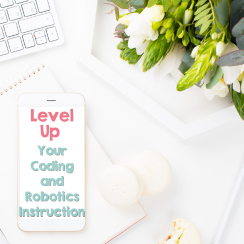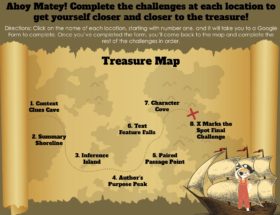In today’s technology-driven world, coding and robotics skills have become increasingly essential. Introducing these subjects to elementary school students gives them an opportunity to learn valuable technical knowledge but also cultivates critical thinking, problem-solving abilities, and creativity. However, I find that often times coding and robotics activities lean more towards just “fun and games” and less towards developing real world skills.
Enter: Career Connections!
In this blog post, we will explore how including specific career connections related to coding and robotics can foster a deeper understanding of the real world connections and inspire students towards future career paths.
- Nurturing Interest and Passion: By incorporating explicit career connections into coding and robotics lessons, elementary school students can gain a clearer understanding of the real-world applications of these skills. As a teacher, you can introduce various career paths that rely on coding and robotics, such as software development, game design, artificial intelligence, and robotics engineering. This exposure helps students recognize the relevance and potential of coding and robotics in their lives, fostering a genuine interest and passion for the subjects.
- Hands-on Experience: To provide students with a more immersive learning experience, it is crucial to incorporate hands-on activities that simulate real-world scenarios. For example, students can engage in project-based learning, where they design and build robots to solve specific challenges. This practical approach not only reinforces coding and robotics concepts but also introduces students to the problem-solving techniques used by professionals in related careers.
- Guest Speakers and Field Trips: Bringing in guest speakers from the tech industry or arranging field trips to local companies or research institutions can be highly beneficial. Students can interact with professionals who utilize coding and robotics skills in their daily work. These experiences allow students to see firsthand the application of their learning in the real world, enabling them to envision themselves pursuing similar career paths in the future. Alternatively, have guests present virtually or find some video interviews that align with the different career paths!
- Building Transferable Skills: Beyond the technical aspects, coding and robotics lessons offer valuable transferable skills that can benefit all students, including gifted learners. These skills include problem-solving, logical reasoning, teamwork, communication, and perseverance. By explicitly connecting these skills to future careers, students can understand their broader applicability and importance in various professional settings.
Taking coding and robotics lessons to the next level by incorporating explicit career connections not only enriches the learning experience but also inspires students to explore future career paths. By nurturing interest and passion, providing hands-on experiences, and sharing stories of real professionals in these jobs, we can equip our students with the skills they need to thrive in an increasingly digital world.










